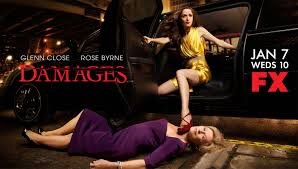5 Tips for Using Flashforwards in TV Writing
Flashforwards are the flashbacks of our era of TV writing. From the flashforwards in Lost that showed our merry ensemble cast finally off the island at last (and wanting to go back) to shows like Damages and Bloodline that structure entire seasons on the content of their jumps in time, this tool has become ubiquitous in our modern age of storytelling as a linear narrative faces more challenges in capturing an audience.
However, it's easy to misuse this device.
Here are 5 things you need to consider before deciding to use flashforwards in your show:
1. Does a flashforward storyline make your story more interesting?
Remember that ABC show, Flashforward? The show centered on the entire world blacking out and witnessing a few seconds of their future. The whole show was structured with the characters being aware of this narrative device, instead of it just being just for the sake of the audience. The show ultimately become too convoluted for its own good and it didn't help that its characters were spouting most of the themes of the show, but the initial concept and first few episodes did a good job with the device.
That brings us to our first point: do flashforwards make the telling of your story MORE INTERESTING?
With Flashforward, the answer is yes -- without the device, the story would be pretty dull (and would also make no sense.) But if you can get rid of the flashforward and the story still stands, then you should cut them.
2. Are your flashforwards shocking enough?
I just started watching Shonda Rhimes' How to Get Away With Murder (and by "just started" I mean I'm on episode 11) and while I love the character development (Viola Davis deserves all the awards, including the Emmy she just won), one of the aspects of this show that I find unnecessary are the flashforwards which almost seem to exist to make use of that expensive bonfire they shot.
The problem with the flashforwards in HTGAWM is that there's no shock value. There is murder in the title of the show, so when we see these law students in the flashforward panicking after committing a murder, there's no surprise there. We expect someone in this show to try and get away with murder, so the power of the flashforwards are lost on us, especially when we're pretty sure they did this on accident.
3. Are your flashforwards evolving and revealing new information?
Damages is a perfect example of utilizing shocking flashforwards that make the audience ask, "how could that even HAPPEN?" which makes us keep watching. The show opens on Rose Byrne's character covered in blood as she runs half-naked through the city of New York. The flashforwards provide us evidence to how she might have killed her husband, but we're uncertain. And what role does her psychopathic boss play in all this?
Not only are the Damages flashforwards shocking, but they bring up more questions than answers, and they keep reinventing themselves with new information as we keep watching throughout the season. The HTGAWM flashforwards are more or less the same scenes over and over again throughout the whole season until we are so done watching these law students freak out.
I think that HTGAWM would be a better show without the flashforwards, and the show grows stronger when we finally move past them.
4. Are you pacing your flashforwards correctly?
Timing is key for making your flashforwards work. Are you using them as bookends for acts, episodes? How much information are you revealing per flashforward? How long are your flashforwards and how far are they into the future? It might help to sit down and sketch out the storyline of the flashforwards independent of the episode so you can watch the progression of reveals and make sure that you aren't repeating beats.
5. Are you telling your flashforwards in the most dramatic way possible?
Since you can pick and choose the most interesting moments in the futures of your show and characters, make sure you're choosing specific, dramatic moments that are also visually appealing. Damages opens with the elevator and Rose Byrne covered in blood. Even How to Get Away With Murder chooses the violet imagery of the mob-like university bonfire and a crowd of rabid college students. Bloodline chooses a significant character's death and a battle with nature.
Like dream sequences, sky's the limit. Choose dramatic, visual moments that will hook your audience.
-Amy
✍️ Find High-Paying Writing Jobs on My Job Board
Lots of cool writing jobs come across my desk — and I'm here to share these curated opportunities with you. Want to work remotely from Paris or at home in your PJs? Subscribe now to get high-paying writing work straight to your inbox!




